
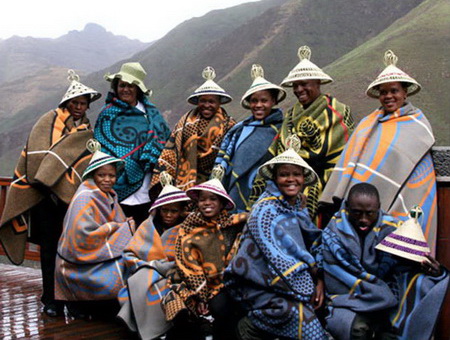
The Sotho people, or Basotho, are a Bantu ethnic group of Southern Africa who speak Sesotho. They are native to modern Lesotho and South Africa. The Basotho have inhabited the region since around the fifth century CE and are closely related to other Bantu peoples of the region.
The modern Basotho identity emerged from the accomplished diplomacy of Moshoeshoe I who unified the disparate clans of Sotho–Tswana origin that had dispersed across southern Africa in the early 19th century. Most Basotho today live in Lesotho or South Africa, as the area of the Orange Free State was originally part of Moshoeshoe's nation (now Lesotho).
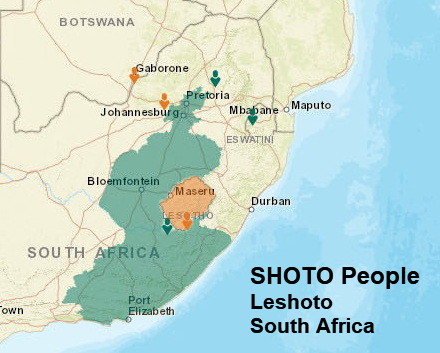
Ntsoana-Tsatsi is believed to be the place of origin of the Sotho/Basotho people. It is both a mythical and physical place. The mythical aspect of it, as described by Ellenberger (1988) is a place from where the first Sotho people emerged.
They are believed to have come from the ground at Ntsoana-Tsatsi, where there is a lot of water and reeds. The geographical location of this place is believed to be Vrede in the Free State Province of South Africa, according to accounts by informants. It still carries this name and some Sotho people are still found in the area.
The allure of urban areas has not diminished, and internal migration continues today for many black people born in Lesotho and other Basotho heartlands. Generally, employment patterns among the Basotho follow the same patterns as broader South African society. Historical factors cause unemployment among the Basotho and other Black South Africans to remain high.
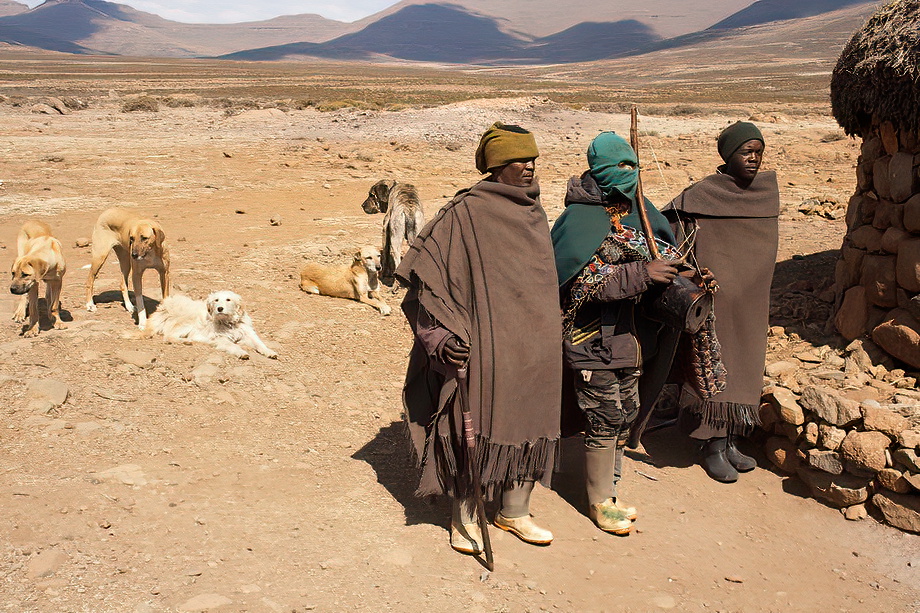
Early history. Bantu-speaking peoples had settled in what is now South Africa by about 500 CE. Separation from the Tswana is assumed to have taken place by the 14th century. The first historical references to the Basotho date to the 19th century. By that time, a series of Basotho kingdoms covered the southern portion of the plateau (Free State Province and parts of Gauteng). Basotho society was highly decentralized, and organized on the basis of kraals, or extended clans, each of which was ruled by a chief. Fiefdoms were united into loose confederations.
19th century. In the 1820s, refugees from the Zulu expansion under Shaka came into contact with the Basotho people residing on the highveld. In 1823, pressure caused one group of Basotho, the Kololo, to migrate north. They moved past the Okavango Swamp and across the Zambezi into Barotseland, which is now part of Zambia. In 1845, the Kololo conquered Barotseland.
At about the same time, the Boers began to encroach upon Basotho territory. After the Cape Colony was ceded to Britain at the conclusion of the Napoleonic Wars, farmers who opted to leave the former Dutch colony were called the voortrekkers ("pioneers") and moved inland where they eventually established independent polities.
At the time of these developments, Moshoeshoe I gained control of the Basotho kingdoms of the southern highveld. Universally praised as a skilled diplomat and strategist, he moulded the disparate refugee groups escaping the Difaqane into a cohesive nation. His leadership allowed his small nation to survive the obstacles that destroyed other indigenous South African kingdoms during the 19th century, such as the Zulu hegemony, the inward expansion of the voortrekkers and the plans of imperial Britain.
In 1822, Moshoeshoe established the capital at Butha-Buthe, an easily defensible mountain in the northern Drakensberg mountain range, thus laying the foundations of the eventual Kingdom of Lesotho. His capital was later moved to Thaba Bosiu.
To deal with the encroaching voortrekker groups, Moshoeshoe encouraged French missionary activity in his kingdom. Missionaries sent by the Paris Evangelical Missionary Society provided the King with foreign affairs counsel and helped to facilitate the purchase of modern weapons.
Aside from acting as state ministers, missionaries (primarily Casalis and Arbousset) played a vital role in delineating Sesotho orthography and printing Sesotho language materials between 1837 and 1855. The first Sesotho translation of the Bible appeared in 1878.
In 1868, after losing the western lowlands to the Boers during the Free State–Basotho Wars, Moshoeshoe successfully appealed to Queen Victoria to proclaim Lesotho (then known as Basutoland) a protectorate of Britain. Accordingly, the British administration was established in Maseru, the site of Lesotho's current capital. Local chieftains retained power over internal affairs, while Britain was responsible for foreign affairs and the defense of the protectorate.
In 1869, the British sponsored a process to demarcate the borders of Basutoland. While many clans had territory within Basutoland, large numbers of Sesotho speakers resided in areas allocated to the Orange Free State, the sovereign voortrekker republic that bordered the Basotho kingdom.
Cannibalism. The practice of cannibalism increased among the Basotho during the times of lifaqane (literally "need for sustenance" or "we want") when there were many refugee tribes fleeing wars started by the Zulu King Shaka. According to missionary Ellenberger, tribes who practiced cannibalism were the Bakhatla of Tabane, specifically those who were ruled by the Chief Rakotsoane at Sefikeng.
The district of Mangane, now known as Bloemfontein, was described as ‘infested with cannibals’ by the end of 1822. A cave at Mohale’s Hoek had a brotherhood of 27 cannibals who were under the leadership of Motleyoa. Other areas known to have cannibals included the river banks of Cornelius Spruit, where there were several villages of cannibals.
According to the Basotho, cannibals are regarded as people having evil supernatural powers comparable with Satan or spirits of the dead that oppose the good spirits and Basotho ancestors. Their tradition states that the great Bakuena chief, Mohlomi, prophesied the coming of the lifaqane and cannibalism on his death bed with the words, "After my death, a cloud of red dust will come out of the east and consume our tribes. The father will eat his children. I greet you all, and depart to where our fathers rest."
The Basotho cannibals believed that their human victims would appease the gods. Missionaries who arrived in 1883 estimated that there were between 7,000 and 8,000 Basotho practicing cannibalism between the Orange River, the Drakensberg and the Vaal river.
Moeshoeshoe and his people experienced an attack by cannibals as they moved from Butha Buthe to Thaba Bosiu seeking safety from King Shaka’s wars in 1824. During the attack, the cannibals captured and ate Moshoeshoe’s grandfather, Peete. Although cannibals were the cause of his grandfather's death, Moeshoeshoe chose not to punish captured cannibals. Instead, he decided to aid them in their rehabilitation into society by giving them food and cattle.
From 1822 to 1828, there were about 300,000 victims of cannibalism. The practice stopped shortly after the arrival of Christian missionaries as cannibalism was not tolerated in the Christian lifestyle. The Cannibal Trail just outside Clarens in the eastern Free State runs between the Rooiberge and Witteberg mountains, where cannibals used to reside.
20th century. Britain's protection ensured that repeated attempts by the Orange Free State, and later the Republic of South Africa, to absorb part or all of Basutoland were unsuccessful. In 1966, Basutoland gained its independence from Britain, becoming the Kingdom of Lesotho.
Sesotho is widely spoken throughout the sub-continent due to internal migration. To enter the cash economy, Basotho men often migrated to large cities in South Africa to find employment in the mining industry. Migrant workers from the Free State and Lesotho thus helped to spread Sesotho to the urban areas of South Africa. It is generally agreed that migrant work harmed the family life of most Sesotho speakers because adults (primarily men) were required to leave their families behind in impoverished communities while they were employed in distant cities.
Attempts by the apartheid government to force Sesotho speakers to relocate to designated homelands had little effect on their settlement patterns. Large numbers of workers continued to leave the traditional areas of Black settlement. Women gravitated towards employment as agricultural or domestic workers while men typically found employment in the mining sector.
In terms of religion, the central role that Christian missionaries played in helping Moshoeshoe I secure his kingdom helped to ensure widespread Basotho conversion to Christianity. Today, the bulk of Sesotho speakers practice a form of Christianity that blends elements of traditional Christian dogma with local, pre-Western beliefs. Modimo (“God”) is viewed as a supreme being who cannot be approached by mortals. Ancestors are seen as intercessors between Modimo and the living, and their favor must be cultivated through worship and reverence. Officially, the majority of Lesotho's population is Catholic.
The Basotho's heartland is the Free State province in South Africa and neighboring Lesotho. Both of these largely rural areas have widespread poverty and underdevelopment. Many Sesotho speakers live in conditions of economic hardship, but people with access to land and steady employment may enjoy a higher standard of living. Landowners often participate in subsistence or small-scale commercial farming ventures. However, overgrazing and land mismanagement are growing problems.
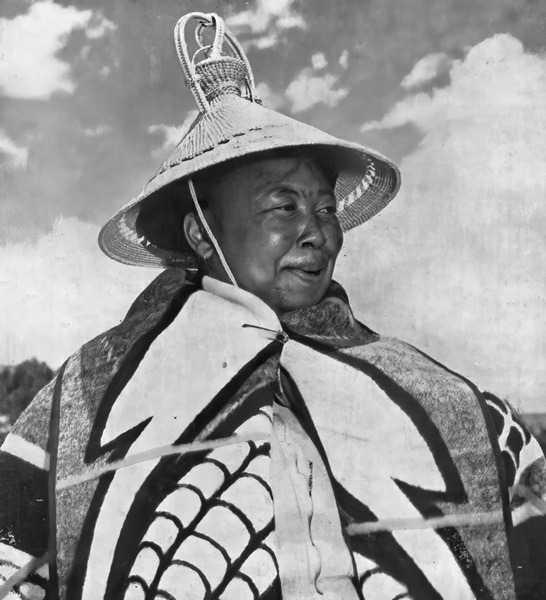
The Sotho language, seSotho, is a Bantu language closely related to seTswana. Sotho utilizes click consonants in some words, while sePedi and seTswana do not have clicks. Sotho is spoken in the Kingdom of Lesotho and in South Africa. It is concentrated in the Free State, Gauteng and Eastern Cape Provinces, with small groups of speakers in Namibia and Zambia.
Sotho is 1 of the 11 official languages recognized by the South African Constitution and 7.9% of the South African population uses it as their home language. It is a tonal language governed by the noun, which is split into various classes. It is known as an agglutinating language (a combination of simple word elements to express a specific meaning), with many suffixes and prefixes used in sentence construction causing sound changes.
It is rich in proverbs, idioms, and special forms of address reserved for elders and in-laws. Currently, Sotho has two spelling systems, one in use in Lesotho and another in South Africa. For example, in Lesotho a common greeting is Khotso, le phela joang? (literally, "Peace, how are you?"). In South Africa, the word joang (how) is written jwang, and khotso is written kgotso.
Sotho was one of the first African languages to become a written language and therefore Sotho literature is extensive. South Sotho is comprised of the Fokeng, Tlokwa, Kwena, Phetla, Phuti, and Pulana dialects or varieties and according to scholars the written form was originally based on the Tlokwa dialect. Today the written language is mostly based on the Kwena and Fokeng dialects, although there are variations. Sesotho was transmuted into writing by the missionaries Casalis and Arbousset of the Paris Evangelical Mission who arrived at Thaba Bosiu in 1833. One of the first novels in a South African language was Chaka, written in Sotho by Thomas Mofolo in the early years of the twentieth century. It is still read today and has been translated into a number of languages.
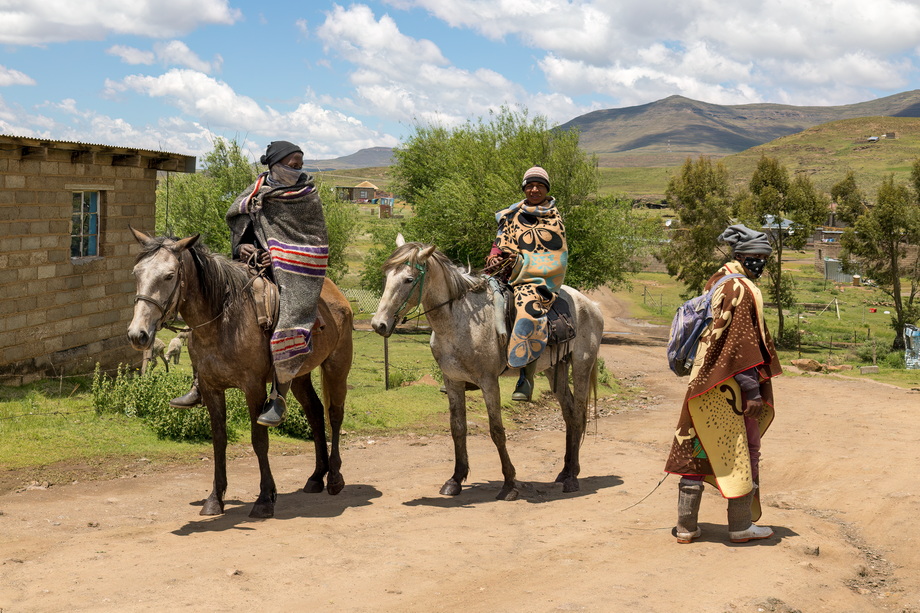
The economy of Basotho people in Lesotho is based on agriculture, livestock, manufacturing, mining, and depends heavily on inflows of workers’ remittances and receipts from the Southern African Customs Union (SACU). The majority of households subsist on farming.
The formal sector employment consist of mainly the female workers in the apparel sector, the male migrant labor, primarily miners in South Africa for 3 to 9 months and employment in the Government of Lesotho (GOL) . The western lowlands form the main agricultural zone. Almost 50% of the population earn income through informal crop cultivation or animal husbandry with nearly two-thirds of the country's income coming from the agricultural sector.
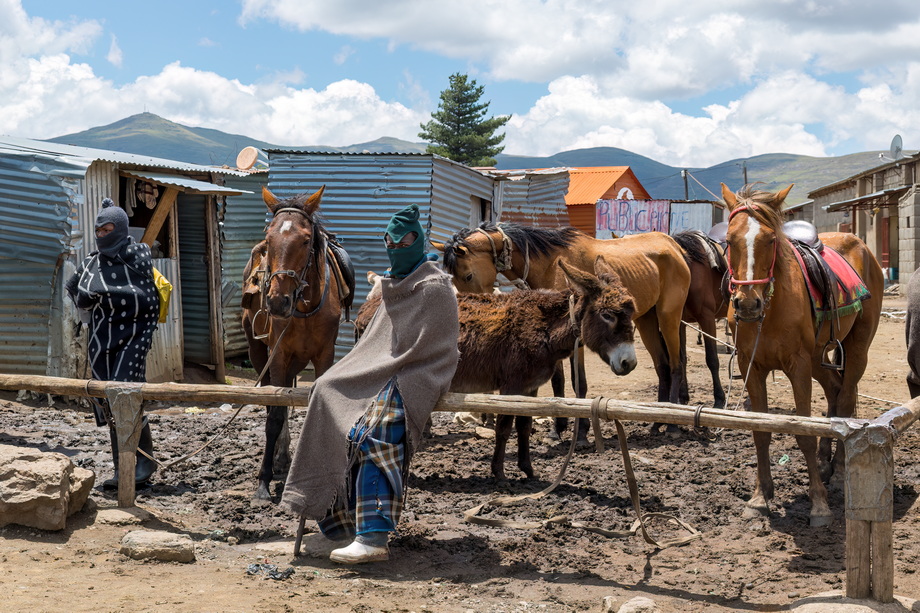
Administration of justice is still, in some respects, in the hands of these leaders. In former times, the legal code was based mainly on custom. Sotho descent rules were important, even though descent groups did not form discrete local groups. Clans were often totemic, or bound to specific natural objects or animal species by mystical relationships, sometimes involving taboos and prohibitions. Major Sotho clans included the Lion (Taung), Fish (Tlhaping), Elephant (Tloung), and Crocodile (Kwean) clans.
Community headmen’s residences were clustered around the chief's residence. Sotho villages sometimes grew into large towns of several thousand people. Farmland was usually outside the village, not adjacent to the homestead.
This village organization may have enabled the Sotho villagers to defend themselves more effectively than they could have with dispersed households, and it probably facilitated control over community headmen and subjects by the chief and his family.
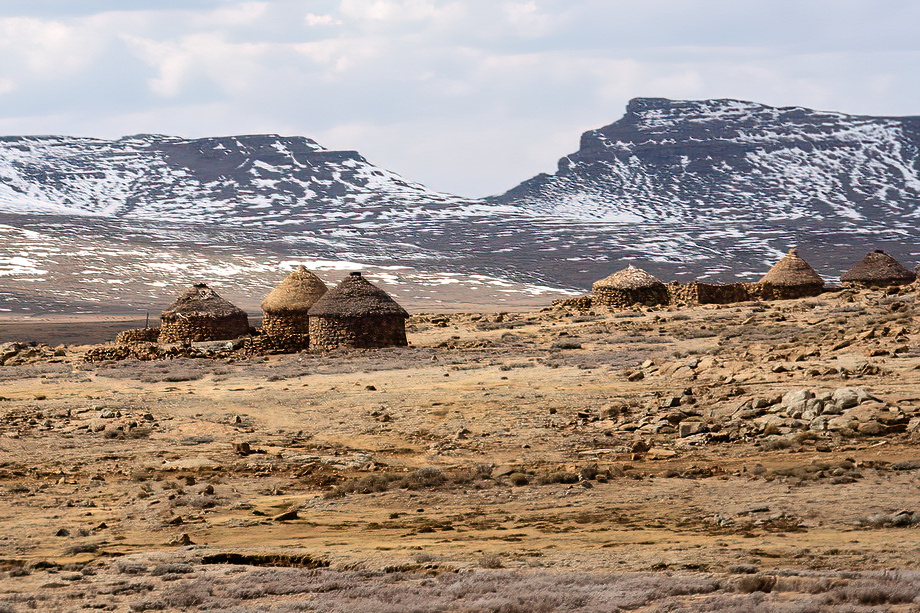
Sotho villages were also organized into age-sets, or groups of men or women who were close in age. Each age-set had specific responsibilities e.g. men organized for warfare and herding. An entire age-set generally graduated from one task to the next, and the village often celebrated this change with a series of rituals and, in some cases, an initiation ceremony.
Basotho boy inititiates.Boys from circumcision “lodge.” The ochred dog in the foreground serves as a reminder that the uncircumcised are like dogs. Boys are thought to have invisible tails before they are initiated. Dogs, like boys, also undergo a “circumcision.” In their case, a bit of flesh is excised from below their tongues. Neither boys nor dogs are expected to mature if they remain uncircumcised. The boys are wrapped in blankets which symbolize and effect their social transition from boyhood to manhood. One initiate sports a great number of the safety pins which are used to pin the boys’ symbolic blanket-wear together. Another initiate wears a mirror, a common adornment for “graduates”of a circumcision lodge. Circumcision rites are anathema to missionaries who claim that the boys are treated with medicines containing human flesh (obtained through “ritual” or “medicine” murder).
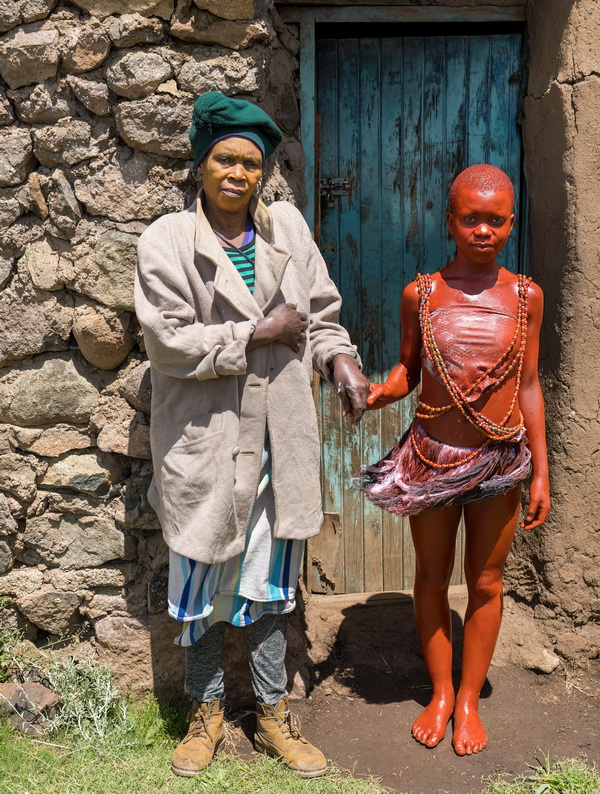
In the past initiations into adulthood were elaborate ceremonies lasting a few months, in which girls and boys were taken separately to the bush in the winter. The boys were circumcised. Increasingly, funerals have become the most elaborate life-cycle rituals.
The practice of the initiation ceremony for boys that are deemed to be ready to be young men is still an integral part of rural Basotho culture.
Among the Basotho, traditional initiation (Lebollo) has three meanings, which mark achange and a passage to maturity. The first meaning refers to the tapering-off of the umbilical cord from a newly born baby (ngoana o bolotse) that also signifies the end of menstruation for its mother. The umbilical cord is discarded by burying it. This signifies a bond a child has with the soil of its origin. This explains the anger people have should they be removed from their birthplace. Shaving the baby’s head, smearing the floor with mud and slaughtering a sheep for thanksgiving and welcome of the baby into the family celebrate Lebollo. When the baby is shown a live sheep, Basotho would say, ‘our child we welcome you into the family. This is your sheep, accept it’. The sheep would then be slaughtered and all those women who brought showering gifts and other services for giving birth would be invited for merry-making. It is after this celebration that a baby would be given a name.
Basotho male initiates:Basotho "coming of age" training for boys is conducted by sending groups of boys to secret locations in the mountains with a few "leaders".
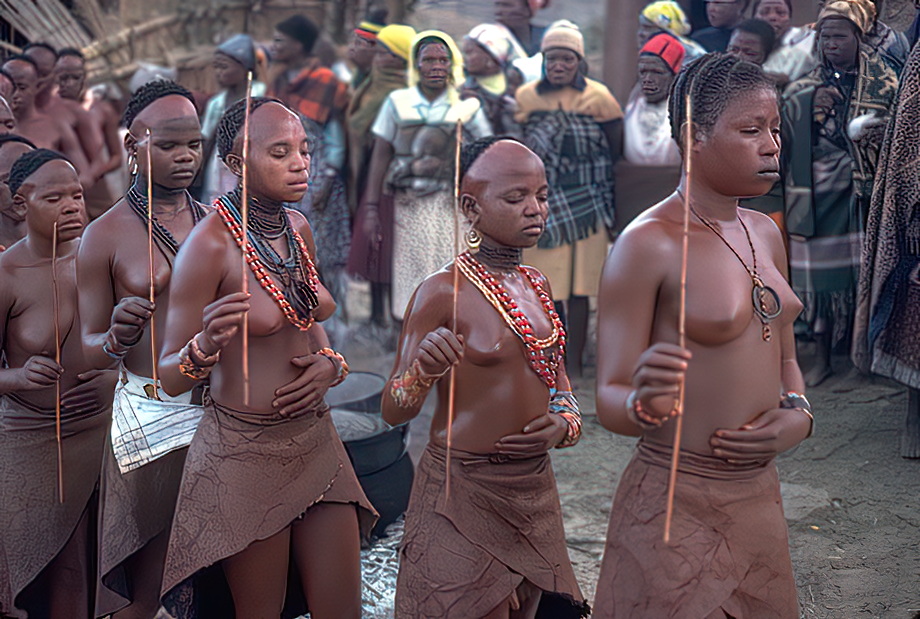
As a patriarchal society where traditionally women are expected to respect men at all times and men are the primary if not sole decision makers, it makes sense that the locations of the schools as well as the things learned, discussed and performed at these schools would be kept from the half of the population not able to attend.
For the period od three months or more, they don't bathe. They wear only a red diaper like bottom and a blanket. They don't wear shoes and they cover themselves with a red dyed mud that is supposed to leave their skin healthier than it has ever been.
The second meaning of initiation refers to circumcision at the modern hospital when a boy child or a man goes for genital operation that removes the foreskin at the hospital. Among the Basotho people will always say ‘o bolotse’, meaning that he has been circumcised. There are no ceremonial rituals to mark this type of procedure since it is not regarded as having anything sacred about it. However, those who have gone through it still feel that it should be treated secretly as though it is the same as the ‘bush’ school circumcision. Because of their rigorous training. Basotho male initiates are very particular about their initiation training and would feel very offended if his father could just enter his room while he was not properly dressed. Those who have attended the ‘bush training’ do not regard those circumcised at the hospital as true initiates. There are still animosities between the initiates and them.
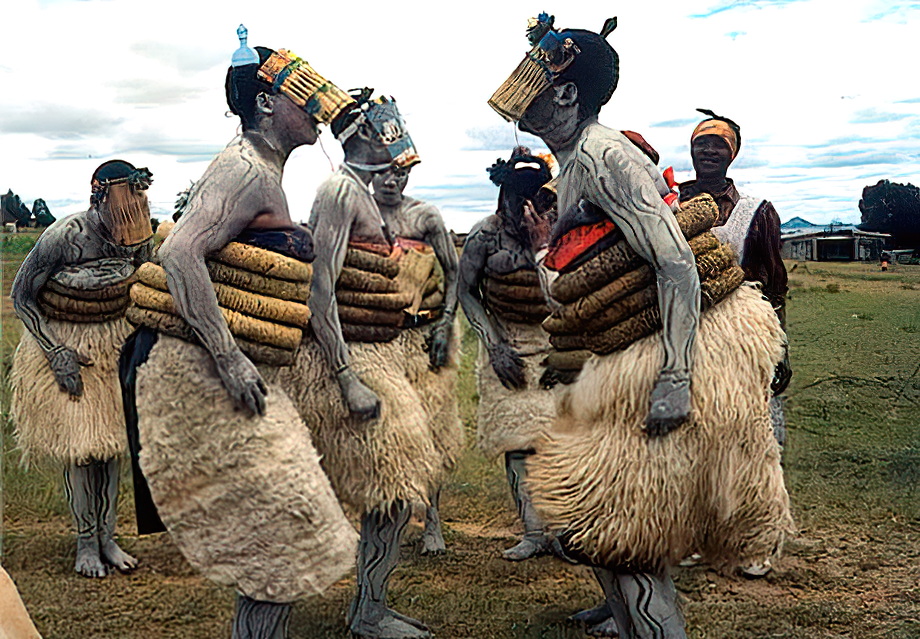
The third meaning of Lebollo refers to a rite of passage into adulthood of both adolescent boys and girls. It is this type of Lebollo that presents challenges to the rural communities in Lesotho and South Africa. Due to the confidentiality and utmost secrecy of the process, the discussion will not be so much on what is happening during initiation, but what both the graduates from the traditional initiation schools and those who have never attended as well as the society at large, see as being the problems and prospects. The initiates cannot tell the secret (koma) but were willing to say what happened. This Koma (secrecy) remains a mystery to outsiders.
Male initiation is more popular than female one. Big celebrations are held at the end of the process at the initiates’ respective homes. Boys go to the mountains and spend many weeks there to be taught about their ancestors, culture, history and important events, behavior, hard-ships, respect, accountability, family issues, solving family conflicts and diseases.

Initiation school secrets are taught and discussed as older wiser men act as mentors to the younger generation so as to continue this tradition. These young men dressed in traditional Basotho attire, have made themselves famous for the beautiful, distinct songs that they sing when they return from the mountains. They are expected to be ambassadors who are proud of their heritage when the rites come to an end. The girls’ breasts are wrapped in thick grass ropes (concealed by blankets ).
For women it is not such a big occasion except among the Matebele clan. With the coming of Western civilisation Lebollo got pushed aside as an educational institution. Its richness got sacrificed and substituted.
Girls from initiation. They hold reeds symbolizing the belief that the Basotho had their genesis in a reed bed. They wear cowskin skirts because the cow, which was at the basis of their traditional culture, is “the Basotho’s mother”.
The inflated gall bladder (in the hair ) is for good luck. The animal fat around their necks comes from the reproductive organs of the stock which has been sacrificed for their initiation. It enhances their fertility.However, currently the trend seems to have changed. More boys are again leaving school and joining Lebollo.
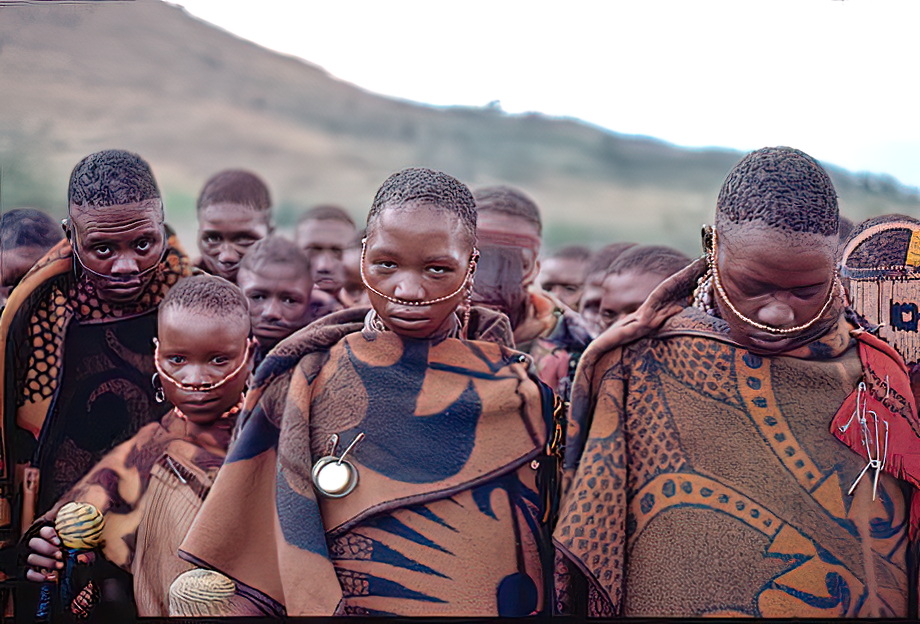
The Supreme Being that the Sotho people believe in is most commonly referred to as Modimo. Modimo is approached through the spirits of one's ancestors, the balimo, who are honored at ritual feasts. Theologian Klaus Nürnberger (1975) contends the God of the Sotho people did not communicate with them in any way or require of them any action or acknowledgement of his existence.
He is believed to be both above and below the earth. Their God is not acknowledged in their religious activities through either prayer or sacrifice, something which also means that there are no religious practitioners who serve as instruments of contact between God and the Sotho people (Nürnberger 1975). However, Sotho people have beliefs and practices that acknowledge other deities known as ancestral spirits. Ancestral spirits are spirits of Sotho men who have died. Each spirit is remembered and acknowledged by the family members as senior in rank, to be recognized as an ancestor, through ritual and practice (Nürnberger 1975). Each community had its traditional herbalist healers called Ngaka in Sesotho. They functioned as shamans, spiritual counselors and protectors against evil spirits and magic.
The ancestral spirit has the power to affect the lives of his family in either a negative or positive way depending on their acknowledgement of him through ritual and practice. It is, as Nürnberger (1975: 177) puts it, the responsibility of the family to perform sacrifices and the pouring of traditional beer as a means of acknowledging and recognizing the ancestor and their superior. These acts serve to appease the ancestor so that he will not act against them by causing problems for them such as drought amongst others, the ancestor will instead bless the family and keep them from harm (Nürnberger 1975). He points out, and I agree, that ancestral spirits rely on their descendants for survival because they are only remembered if there are people alive to acknowledge their presence through ritual (Nürnberger 1975: 177).
In cases where ill fate has befallen the family, diviners or traditional doctors serve as a link between them and their ancestors to discover the cause of such problems. The diviner will then offer instructions, from the ancestral spirits, on how to proceed to restore that which was lost.
People contact their ancestor through diviners for various reasons; it can be to acknowledge, seek blessings, and give thanks and so on. According to Bishop of the Catholic Church of Johannesburg, Buti Thlagale (2006: 2) ancestral spirits were praised and celebrated communally and played the role of regulating morality and protecting their descendants. The very nature of Sotho beliefs and religion is what made it easy for the transition to Christianity by many at its introduction in the nineteenth century, at the arrival of the French missionaries in Lesotho (de Clark 2000). King Moshoeshoe welcomed the missionaries, he and his people learnt about Christianity from them and many were converted and became church members. “… Casalis, Gosselin and Arbousset founded the mission which was to become the pride of their society, …” (de Clark 2000: 5). The introduction of Christianity brought immense change to the Sotho society. The role of the diviner was taken over by the priest or pastor with the recognition of God as more than a distant deity, but a God who involves himself in their lives and they interact daily with him. They also began to interact with God and to acknowledge him through church attendance and prayer amongst other actions. The introduction of Jesus Christ as both man and God was not difficult for the Sotho to comprehend as the ancestral spirits have a similar role; therefore the transition was not overly challenging (Quinlan 1988).
In Sotho tradition, the man is considered the head of the household. Women are defined as farmers and bearers of children. Polygymous marriages (more than one wife) are not uncommon among the elite, but they are rare among commoners.
Marriages are arranged by transfer of bohadi (bride wealth) from the family of the groom to the family of the bride. In Sotho, the words for father (ntate) and mother (mme) are used commonly as address forms of respect for one's elders. The general attitude toward childhood is well summarized by the proverb Lefura la ngwana ke ho rungwa, which roughly translates as "Children benefit from serving their elders."
At the heart of the Basotho tradition and culture is music and dance. They have always been an inextricable part of Basotho life. Countless rituals and social activities are accompanied by song, dance and ululation.
The three dances; the mohobelo, litolobonya, and the mokhibo are performed regularly. On special occasions, to honour their chief, the men performed the mohobelo. The Basotho, like their fellows the Zulus, the Xhosa and Tswana, love to sing! The African Spirituals of the deep South, and the natural harmonies of the African in his own habitat, share a bond, indicating a common heritage intensified by the deep felt religious convictions of the African folk at heart.
They sing of their honoured founder, Moshoeshoe; they sing well-loved hymns from their wide repertoire, they sing in English and in Latin, as well as in their sister languages, Tswana and Xhosa and of course in their own Lesotho tongue.
The Basotho people historically lived in a broad area that encompasses much of South Africa's Free State province and also the independent kingdom of Lesotho. Urbanisation and migrant labour have ensured that you will now often hear the Sotho language spoken in Gauteng. In its traditional heartland Basotho cooking reflects the agricultural and culinary demands of cold winters and mountainous terrain. There is a culture of vegetable preservation and many Basotho dishes are infused by the intense flavours of sun dried vegetables known as mangangajane.
There is a Basotho food preference for a fermented flavour which is a taste that can be confusing and disconcerting for the uninitiated palate but is well worth acquiring. Sorghum, millet and maize are ground, made into a polenta-like porridge dish which when fermented. This porridge has a yoghurt-like flavour and is known as ting. Steamed dumplings made with fermented maize meal are known as leqebekoane and are commonly added to stews.
Meat is luxury item but Basotho celebrations are commonly accompanied by braised oxtail which is traditionally served with dumplings, morogo-dried vegetable melanges and beetroot salad. Herd boys watching sheep and cattle catch wild game and rabbits to sustain themselves during their long mountain sojourns.
Those wishing to taste Basotho cooking in Pretoria should try Kwazi which makes a heavenly ting or Janicky's Place in Atteridgeville township which has moatwana chicken foot stew and mqombothi beer. In Bloemfontein try Buck Molakedi's Bush Pub for sechu sa khoho chicken stew. It all goes well with beer and good company which are always on the menu. When in Ladybrand Alida Bikane Catering and Tavern in Manyatseng township offers a delicious introduction to Basotho hospitality.
The Basotho have a unique traditional attire. This includes the mokorotlo, a conical hat with a decorated knob at the top that is worn differently for men and women. The Basotho blanket is often worn over the shoulders or the waist and protects the wearer against the cold. Although many Sotho people wear westernized clothing, often traditional garments are worn over them.

Many Basotho who live in rural areas wear clothing that suits their lifestyles. For instance, boys who herd cattle in the rural Free State and Lesotho wear the Basotho blanket and large rain boots (gumboots) as protection from the wet mountain terrain. Herd boys also often wear woolen balaclavas or caps year-round to protect their faces from cold temperatures and dusty winds.
The origin of the Basotho blanket goes back over a century. In 1860, King Moshoeshoe I, the founder of of Lesotho, was given a wool blanket as a gift. The King loved the blanket so much, he abandoned his traditional leopard-skin kaross in favour of the blanket.
The Basotho people soon followed suit and to this day the blanket is an inherent part of their lives and culture. You will see blankets of varying colours and patterns at all important life events, from marriage to childbirth to the coronation of kings.
Versions of the Basotho tribal blanket, or ‘Seanamarena’ in Sesotho, are also worn in every day life by herd boys, grannies and even children to keep warm. Lesotho is the only nation south of the Sahara that identifies the culture of an entire country through a nationalistic article of clothing like the Basotho blanket.

Basotho women usually wear skirts and long dresses in bright colors and patterns, as well as the traditional blankets around the waist. On special occasions like wedding celebrations, they wear the Seshoeshoe, a traditional Basotho dress. The local traditional dresses are made using colored cloth and ribbon accents bordering each layer. Sotho women often purchase this material and have it designed in a style similar to West and East African dresses.
Women often wrap a long print cloth or a small blanket around their waist, either as a skirt or a second garment over it. This is commonly known as a wrap, and it can be used to carry infants on their backs.

Special clothing is worn for special events like initiation rites and traditional healing ceremonies.
For a Lebollo la basadi, or a girl's initiation ceremony, girls wear a beaded waist wrap called a thethana that covers the waist, particularly the crotch area and part of the buttocks. They also wear grey blankets and goatskin skirts. These garments are worn by young girls and women, particularly virgins.
For a Lebollo la banna, or a boy's initiation ceremony, boys wear a loincloth called a tshea as well as colorful blankets. These traditional outfits are often combined with more modern items like sunglasses.
Traditional Sotho healers wear the bandolier which consists of strips and strings made of leather, sinew or beads that form a cross on the chest. The bandolier often has pouches of potions attached to it for specific rituals or physical/spiritual protection. It is believed that the San people adopted this bandolier attire for healers during times when the Basotho and the San traded and developed ties through trade, marriage and friendship. The San people's use of the bandolier can be seen in their rock paintings that date to the 1700s.
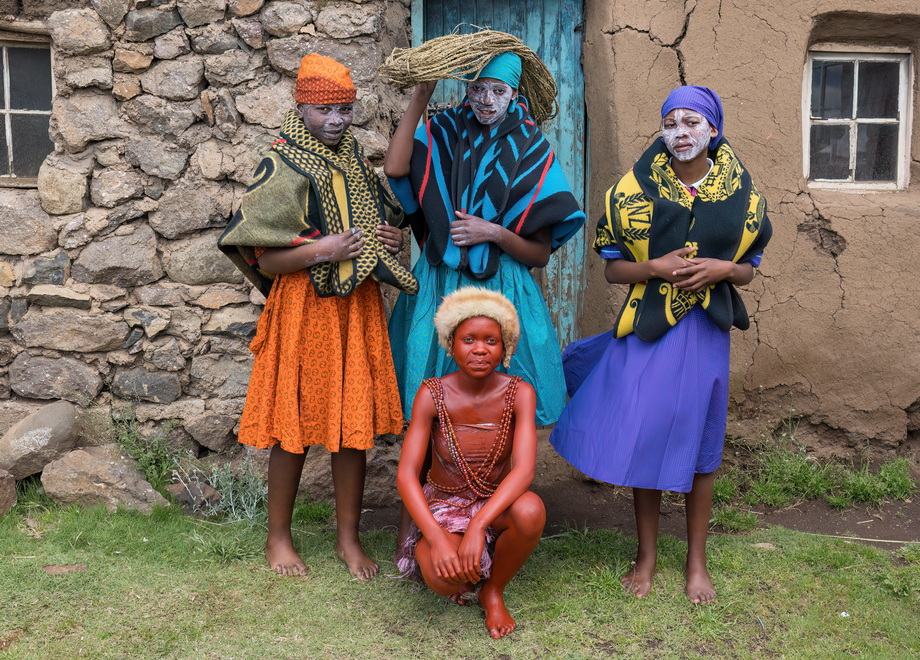
Sources: